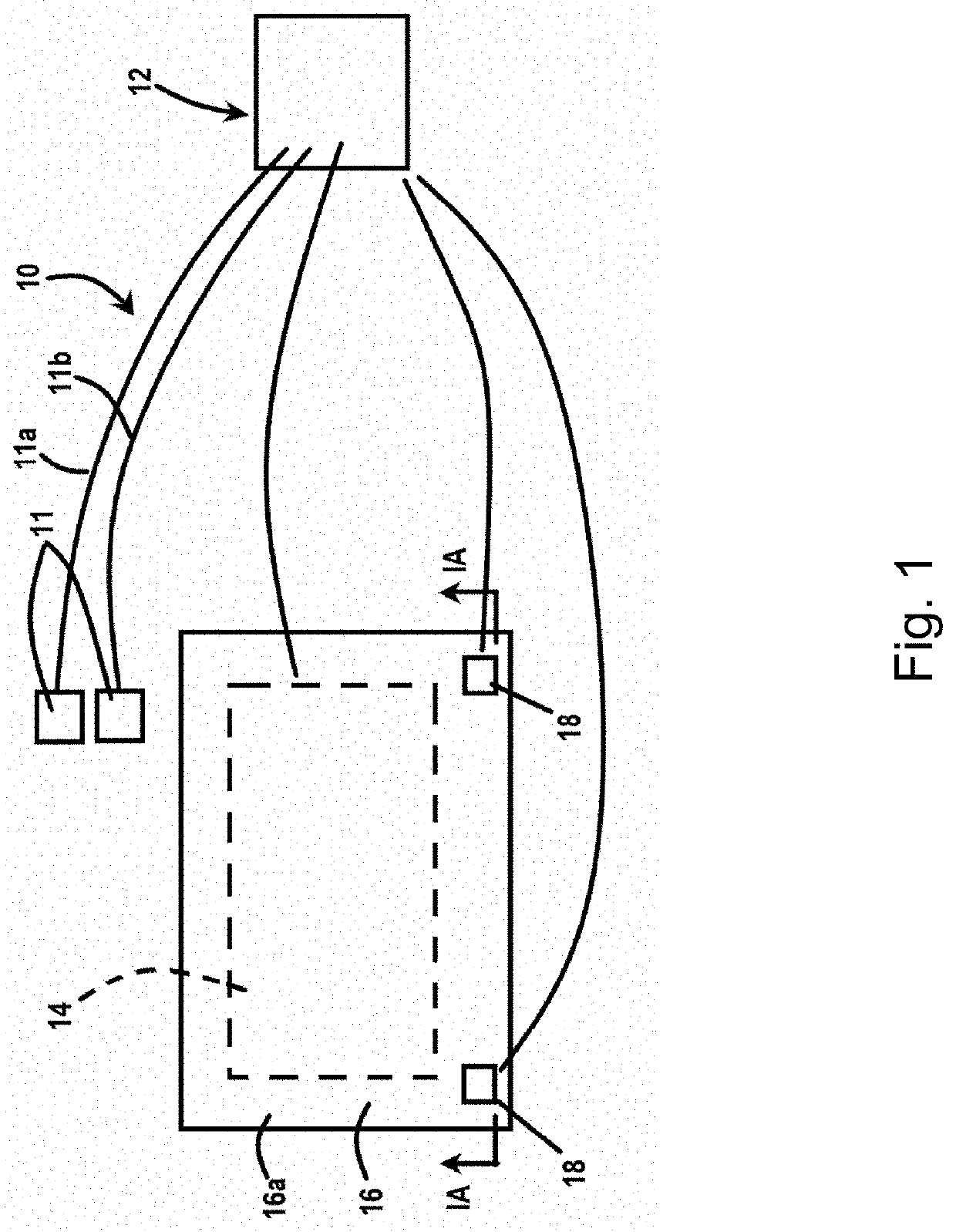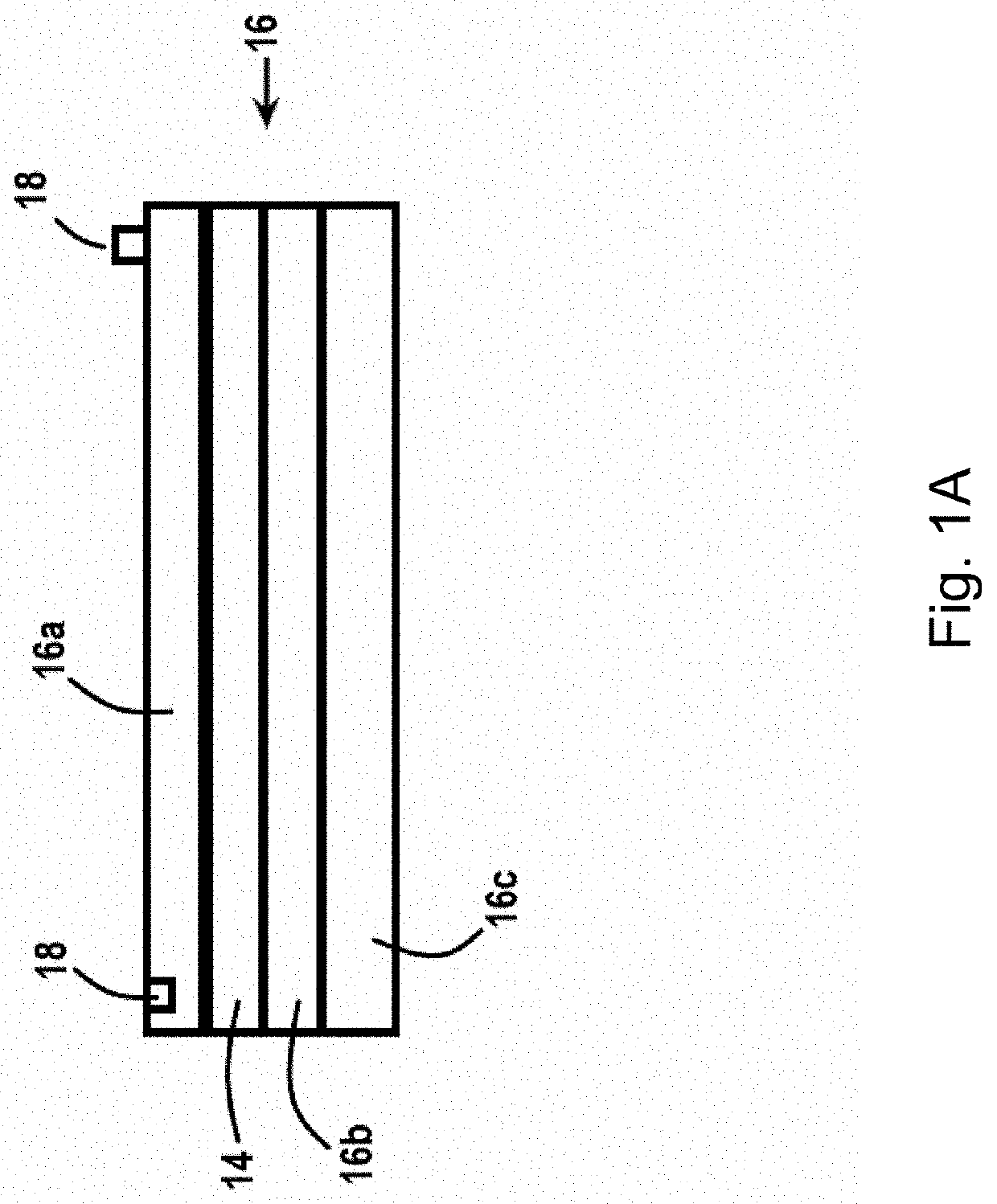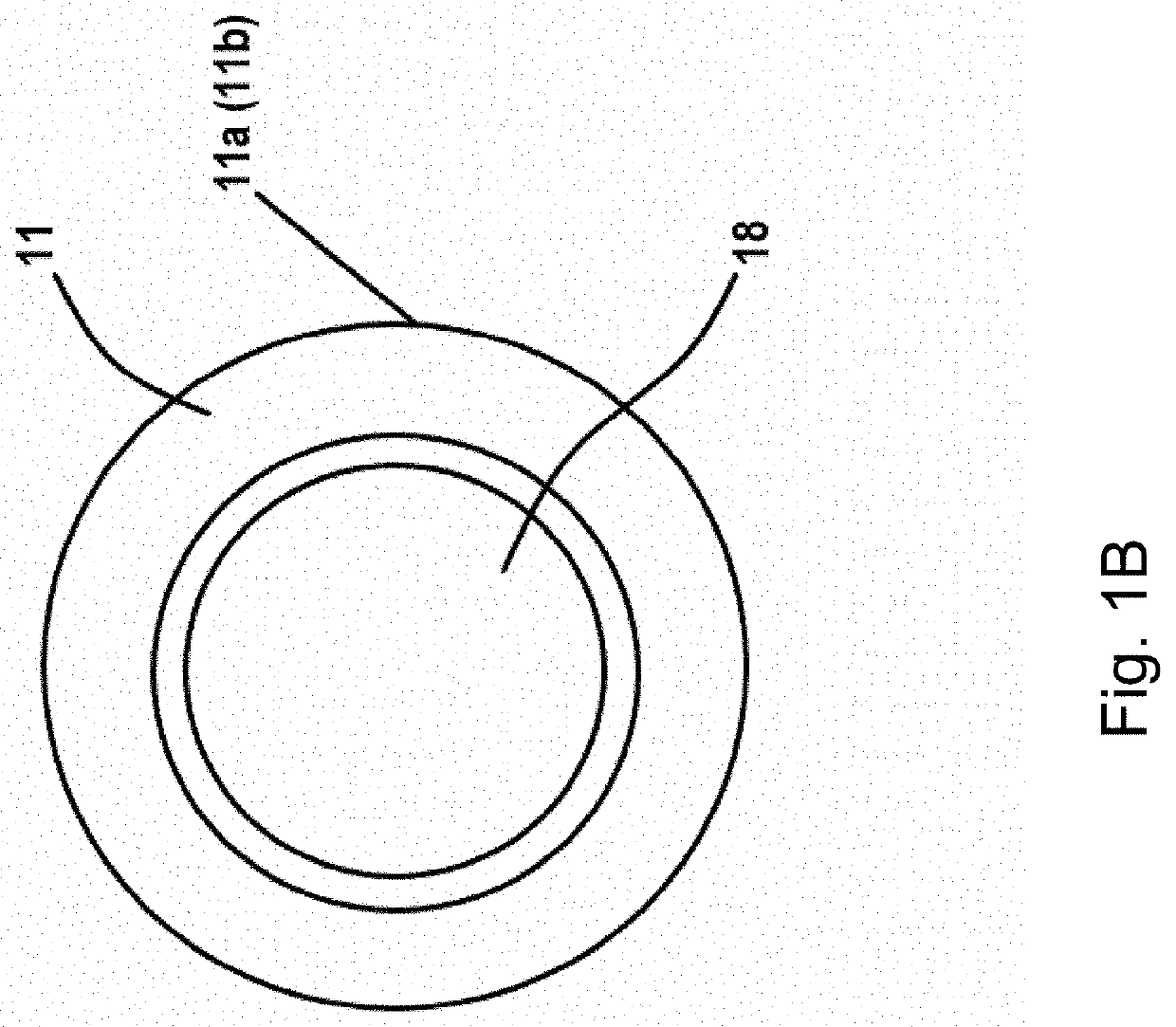Devices, methods, and systems for the treatment and/or monitoring of damaged tissue
a technology for diabetic patients and wounds, applied in contraceptives, artificial respiration, therapy, etc., can solve the problems of only worsening of neuropathy wounds that occur on diabetic patients, especially on the lower extremities, and achieve the effect of improving the quality of li
- Summary
- Abstract
- Description
- Claims
- Application Information
AI Technical Summary
Benefits of technology
Problems solved by technology
Method used
Image
Examples
example 1
c Therapeutic Device and Methods
[0164]A prototype device was built as a stand-alone, at-home system for delivering heat and electrical stimulation to DFUs. An internal heating coil was encapsulated by several fabric layers to ensure uniform heating of the lower-limb (FIG. 2). Electrical stimulation was delivered using an external FDA approved device (EMPI continuum (continuum electrical stimulation device), St. Paul, Minn., USA), because it is capable of delivering a variety of pulse parameters. Under an approved IRB, four healthy subjects were tested. The heating component was set so that the skin temperature reached 37° C., and a symmetric, biphasic waveform was applied with currents reaching 20 mA. Data was acquired using a Biopac system (MP150, Goleta, Calif., USA) outfitted with a laser Doppler flow meter and skin temperature probe (FIG. 7). Additionally, a high voltage probe was used to record the output of the stimulator in real-time. A snapshot of the data (FIG. 3) shows tra...
example 2
ng the Effects of Heat Alone on Healing of DFUs
[0165]The therapeutic device will be compared to a heating pad (2014-915 Xpressheat Heating Pad, Sunbeam, Boca Raton, Fla., USA) applied at the bottom of the foot with only vasoconstrictor nerves (typical location of DFU). Ten healthy subjects and ten subjects with Type-2 diabetes and no wound will be recruited. On different days and at random, subjects will be instructed to either wear the therapeutic device or foot sole heating pad. The subjects will lie supine on an examination table. Blood flow will be monitored continuously in the soles of both feet using the MP150 data acquisition system (Biopac Systems, Inc., Goleta, Calif., USA) combined with two laser Doppler flow amplifiers (LDF100C) and two surface probes (TSD140) from Biopac Systems. Temperature will be monitored continuously at the skin surface in the soles of both feet using the MP150 combined with two skin temperature amplifiers (SKTI00C) and two surface probes (TSD202) f...
example 3
of DFUs with the Therapeutic Device
[0166]The electrical stimulation waveform and electrode location will be tested with the therapeutic device, and the temperature will be set to maximize blood flow to the treated leg. Three groups of ten subjects with Type-2 diabetes will be recruited to test three different waveforms (biphasic, asymmetrical biphasic, pulsed DC) synthesized by the EMPI continuum stimulator. To record voltage in real-time during treatment, the stimulator output will be split between adhesive electrodes on the subject's foot and a differential high-voltage probe (DP-25, Pintek Electronics, New Taipei City, Taiwan) connected to the analog input of the MP150 acquisition system. Additionally, the current will be monitored using a wide-band Hall Effect sensor (2877, Pearson Electronics, Palo Alto, Calif., USA) connected to a secondary analog input. The pulse width will be fixed at 300 μs and the amplitude will be increased to the highest level at which the subject is com...
PUM
 Login to View More
Login to View More Abstract
Description
Claims
Application Information
 Login to View More
Login to View More - R&D
- Intellectual Property
- Life Sciences
- Materials
- Tech Scout
- Unparalleled Data Quality
- Higher Quality Content
- 60% Fewer Hallucinations
Browse by: Latest US Patents, China's latest patents, Technical Efficacy Thesaurus, Application Domain, Technology Topic, Popular Technical Reports.
© 2025 PatSnap. All rights reserved.Legal|Privacy policy|Modern Slavery Act Transparency Statement|Sitemap|About US| Contact US: help@patsnap.com



